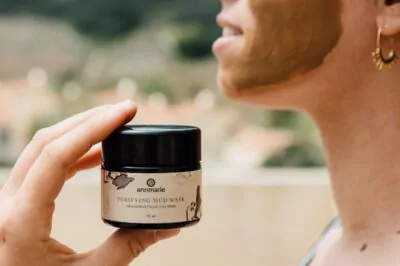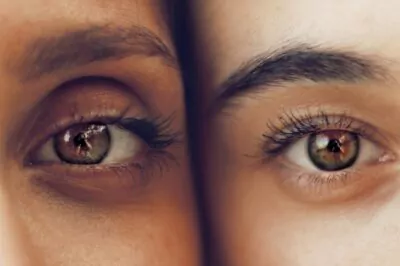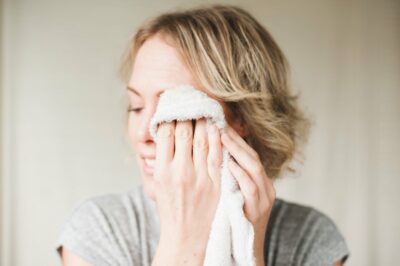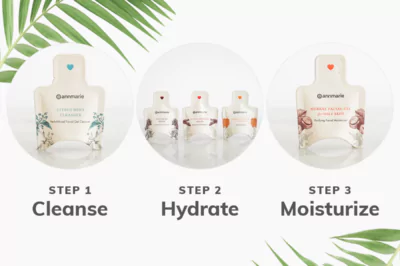Table of Contents[Hide][Show]
Most of us expect acne during our teen years, when our hormones feel totally crazy as we go through puberty. However, many women also experience acne as adults, and it can be frustrating, embarrassing, and the cause of a lot of shame.
Often, women concerned with hormonal acne are met with a prescription of some kind—hormonal birth control, spironolactone, or antibiotics. The trouble is, these do not address the cause of acne and leave many women feeling frustrated that they have to trade their acne for medication side effects.
In this article we’ll explore what causes acne, what you can do about it, and if the pill is really the best solution for you.
The most common cause of adult acne
The most common reason women experience cyclical adult acne is hormonal imbalance. For example, women with Polycystic Ovarian Syndrome (PCOS) may experience quite severe acne. This is because PCOS often leads to higher-than-normal levels of testosterone, one of the main culprits behind acne.
Acne can also be caused by poor gut health, blood sugar imbalances, nutrient deficiencies, and certain dietary choices.
Is the pill the best treatment for acne?
The pill is very effective at treating acne for some women, but doesn’t resolve the issue for good. In addition, some women actually have worse acne on the pill.
How the pill suppresses acne
As I explain in Beyond the Pill, the pill reduces testosterone, which in turn lowers sebum (oil) production. It does this by reducing testosterone production and increasing a protein called Sex Hormone Binding Globulin (SHBG), which is a protein that makes it so your cells can’t use testosterone.
Understand that this is not the case for all women. I have treated many women who took the pill to help with their acne and saw little to no improvement in their skin health. This tells me that testosterone is not the sole cause of their acne.
While women may experience clear skin while on the pill, they also experience terrible acne flare-ups if they decide to stop taking the pill. What does this mean? The pill does not fix acne—it merely suppresses it.
You should definitely understand that if you come off, the acne may very well return. But that’s not to say you can’t use birth control, while also using natural therapies to help clear your skin for good.
Is lowering testosterone in women good?
There is a common misconception that testosterone is a “male hormone”. While men do have much higher amounts of testosterone, women have and need it, too!
Testosterone helps with our mood, and gives us drive and a libido! Going on the pill can cause major disruption in those three important parts of a woman’s life. And, once they go off the pill, they usually experience a rebound of testosterone that causes major breakouts!
There are natural ways to work with your body’s unique chemistry and balance testosterone naturally.
5 natural acne solutions
If you’re wanting to avoid using medications first or looking for additional support to create clear skin, you can try these natural therapies.
1. Optimize your gut health
The skin reflects what is happening internally. The gut plays an incredibly crucial role in our overall health and wellness. In fact, it is now estimated that around 70% of the immune system resides in the gut! And it doesn’t stop there.
As I discuss in Beyond the Pill, the gut plays a role in the amount of estrogen in the body. Gut bacteria make an enzyme called beta-glucuronidase, which is beneficial in certain amounts. However, when there is too much beta-glucuronidase, you have more estrogen…which can lead to estrogen dominance (which can also cause acne).
Regular bowel movements are an important way to remove hormones the body no longer needs and eliminate metabolic waste. One way to support your gut health is to aim to eat at least 25 grams of fiber daily. Including fresh ground flaxseeds, oats, celery, chia seeds, apples, and legumes can help you reach this goal.
Probiotics can help increase the amount of good bacteria in your gut—and these guys are so important for mood, weight, and skin health! Increasing your good gut bacteria can be as simple as eating probiotic-rich foods, along with prebiotics.
But the first step is getting lab tests done to ensure you don’t have SIBO or a candida overgrowth. If you do have either of those, work with your provider to clear them up before moving on to probiotics.
Examples of probiotic-rich foods include: kimchi (spicy fermented cabbage), sauerkraut (fermented cabbage), fermented pickles, and kefir.
A crucial step in finding a solution for acne is to get appropriate lab testing and work on healing your gut.
2. Eat more zinc
Zinc is a mineral that can support healthy levels of testosterone. It also helps your immune system function at its best so it can clear the skin bacteria that can lead to acne.
Foods that are rich in zinc include oysters, pumpkin seeds, beef, and beans.
3. Eat healthy fats for happier hormones
Inflammatory fats, like canola oil, soybean oil, corn oil, and peanut oil become the oils on your skin when part of your diet. These unhealthy fats are doing your skin no favors, because they cause internal inflammation. And what does internal inflammation lead to? External inflammation, in the form of acne, skin rashes, and more.
Healthy fats facilitate hormone balance, and help calm inflammation. Fats have been demonized for years, so there is a lot of fear around consuming them. But please don’t believe everything you read about fat. Not all fats are created equal, so while trans fats are a definite, resounding No, other fats are a vital source of fuel for the body.

A few examples of healthy fats include:
- Wild-caught salmon
- Avocados
- Nuts
- Seeds
- Avocado oil
- Olive oil
- Coconut oil
- Ghee
4. Eliminate dairy
Dairy is a common food sensitivity. It is also inflammatory, and can aggravate acne. In Beyond the Pill, I recommend cutting it out completely for a minimum of six weeks—that means no butter, milk, cheese, whey protein, and ice cream. See if your skin improves once dairy is removed.
Dairy won’t be a trigger for everyone, but the only way to know if it is impacting your acne is to remove it and then bring it back in.
5. Ditch harmful cosmetics
Many commercial makeup and personal care products are loaded with toxins like Endocrine Disrupting Chemicals, which can create hormonal havoc in the body.. Aside from potentially making your acne worse, they can also be detrimental to your health.
The Environmental Working Group is an excellent resource to check whether or not your products are harmful, and to find hormone-friendly alternatives. Annmarie Skin Care is one of my favorite brands, because the company is so mindful of their products, and works hard to ensure that their ingredients are safe and of the highest quality.
You can resolve your acne
There are many acne solutions to try that don’t involve hormone suppression or antibiotics. Optimizing your gut health, introducing more beneficial bacteria to the gut, consuming healthy fats, removing dairy, and cleaning up your beauty routine are, in my experience, some of the best ways to treat acne and resolve it for good.
Acne is usually a symptom of internal imbalance and hormone disruption. By addressing those issues, you can begin to treat the cause of the acne. If you’re looking for more solutions to common symptoms of hormone imbalance, please consider grabbing a copy of my best selling book, Beyond the Pill.







Leave a Reply